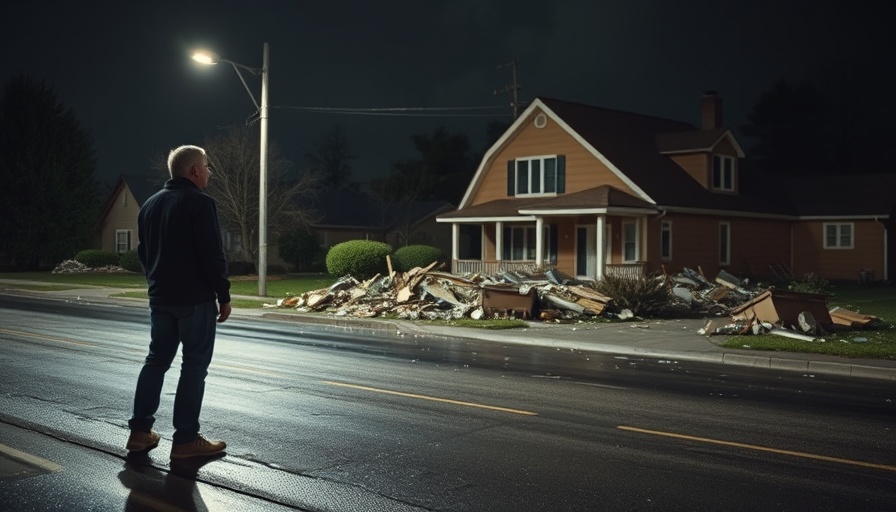
Tornado Outbreak Devastates the South: A Review of Recent Events
On Friday night and Saturday morning, a devastating outbreak of tornadoes swept through the southern and midwestern United States, claiming the lives of at least 14 individuals. The violent storm system, characterized by powerful thunderstorms, particularly affected areas in Arkansas and Missouri, creating a trail of destruction that emergency services are still assessing.
Pervasive Destruction Across Multiple States
According to the National Weather Service, at least 26 tornadoes were reported in a significant weather event that also brought fierce winds and rain to locations including Mississippi and Illinois. The aftermath of this disaster has left emergency crews working tirelessly to locate survivors among the widespread debris. Eyewitness accounts from towns like Bakersfield, Missouri, describe scenes where homes have been ripped apart and communities are left unrecognizable.
The Immediate Aftermath: Casualties and Injuries
The storm has had a tragic toll: eight fatalities have been confirmed in Missouri alone, with additional deaths resulting from the severe weather reported in Arkansas. So far, over 29 people have been injured across the affected regions. In areas where the tornadoes struck at night, such as Butler County, the lack of visibility added to the danger, making residents unaware of the impending threat until it was too late. Missouri’s emergency management has reported significant damages across at least 16 counties in the state.
Future Predictions: Ongoing Storm Risks
Experts have warned that the threat is not over. The National Weather Service has issued a high-risk alert for Alabama and Mississippi for the days following the initial outbreak, predicting a continued potential for severe tornadoes. With a 30% chance of additional tornado activity today, the risk remains significant as severe storms are expected to extend their reach into surrounding states.
The Science Behind Tornadoes: Understanding Their Formation
Tornadoes are generated under specific meteorological conditions, typically involving warm, moist air colliding with cooler, drier air, creating an unstable atmosphere. Meteorologist David Roth indicated the potential emergence of EF-4 or EF-5 tornadoes—among the strongest on the Enhanced Fujita Scale—which can travel long distances and cause catastrophic damage.
The Human Element: Stories of Survival and Courage
Amid the destruction, there have been inspiring stories of individuals banding together for rescue and recovery. Many survivors describe heart-stopping moments of hearing the tornado approach, citing sounds similar to a freight train. Community solidarity has been evident, as many residents have already begun organizing relief efforts to assist those who have lost everything overnight.
Looking Forward: Community Resilience and Preparedness
In the wake of this disaster, discussions around preparedness for severe weather events grow increasingly important. Tornado watches and warnings are critical to saving lives, yet the challenge of responding to nighttime storms remains a significant concern. Local governments are urged to review emergency response plans and provide resources to equip communities better against future occurrences.
Conclusion: A Call for Preparedness and Solidarity
As the South continues to grapple with the aftermath of the tornado outbreak, the focus shifts toward recovery and prevention for the future. Communities are rallying to support those affected and working towards improving awareness and preparedness for extreme weather conditions. The loss of life and property has been tragic, but it has also highlighted the strength and resilience of local communities as they come together in this time of crisis.
 Add Row
Add Row  Add
Add 



Write A Comment